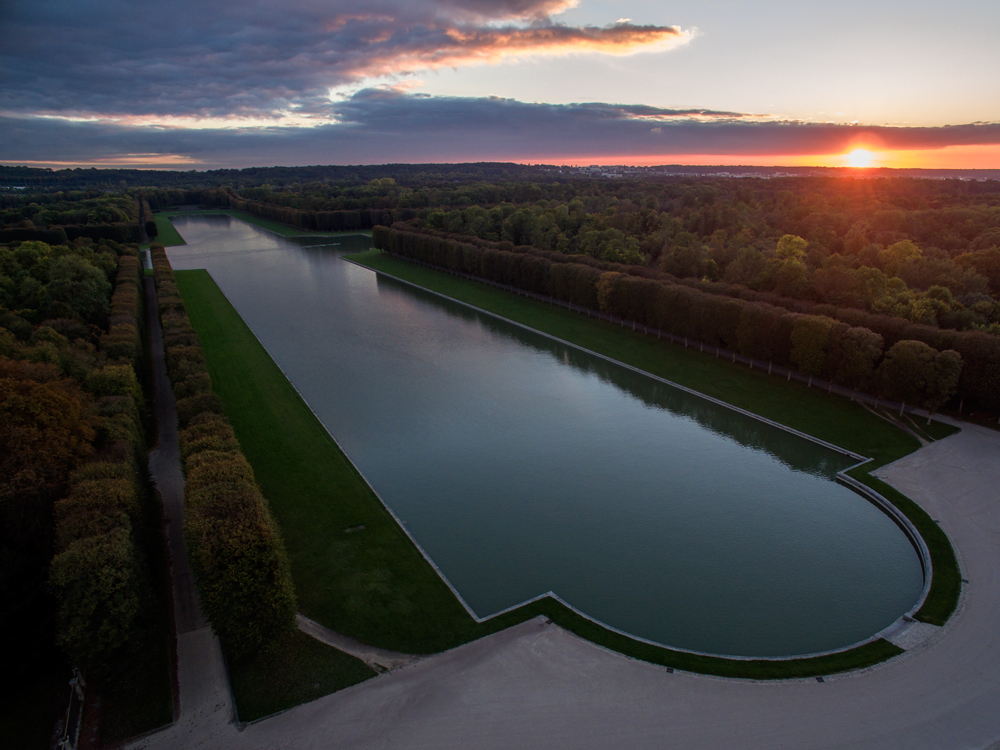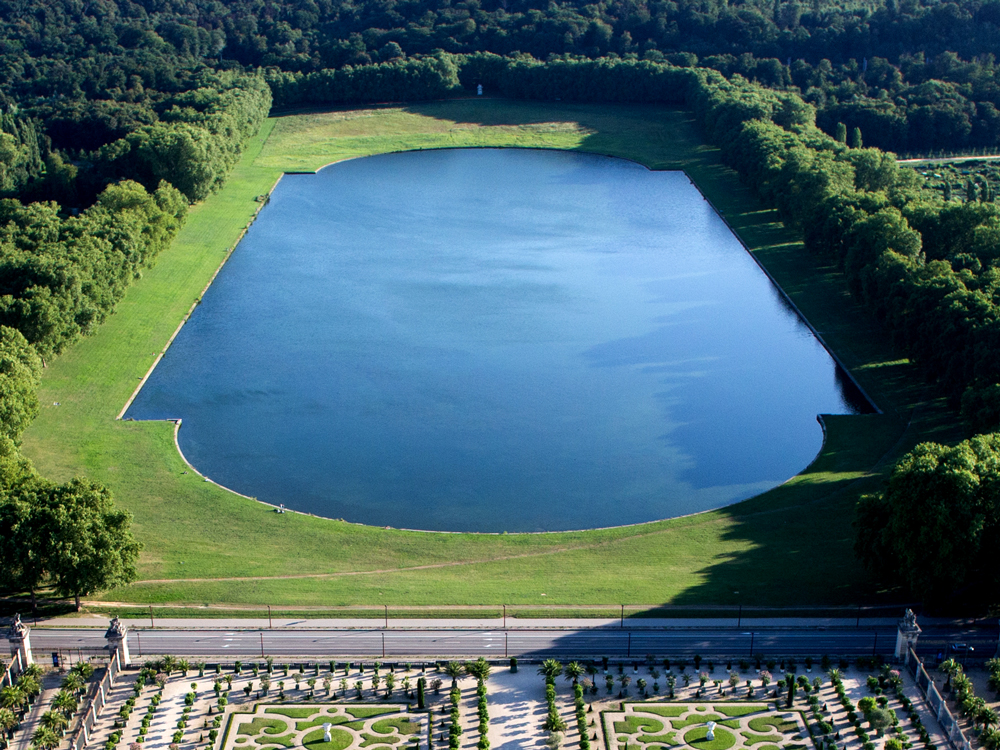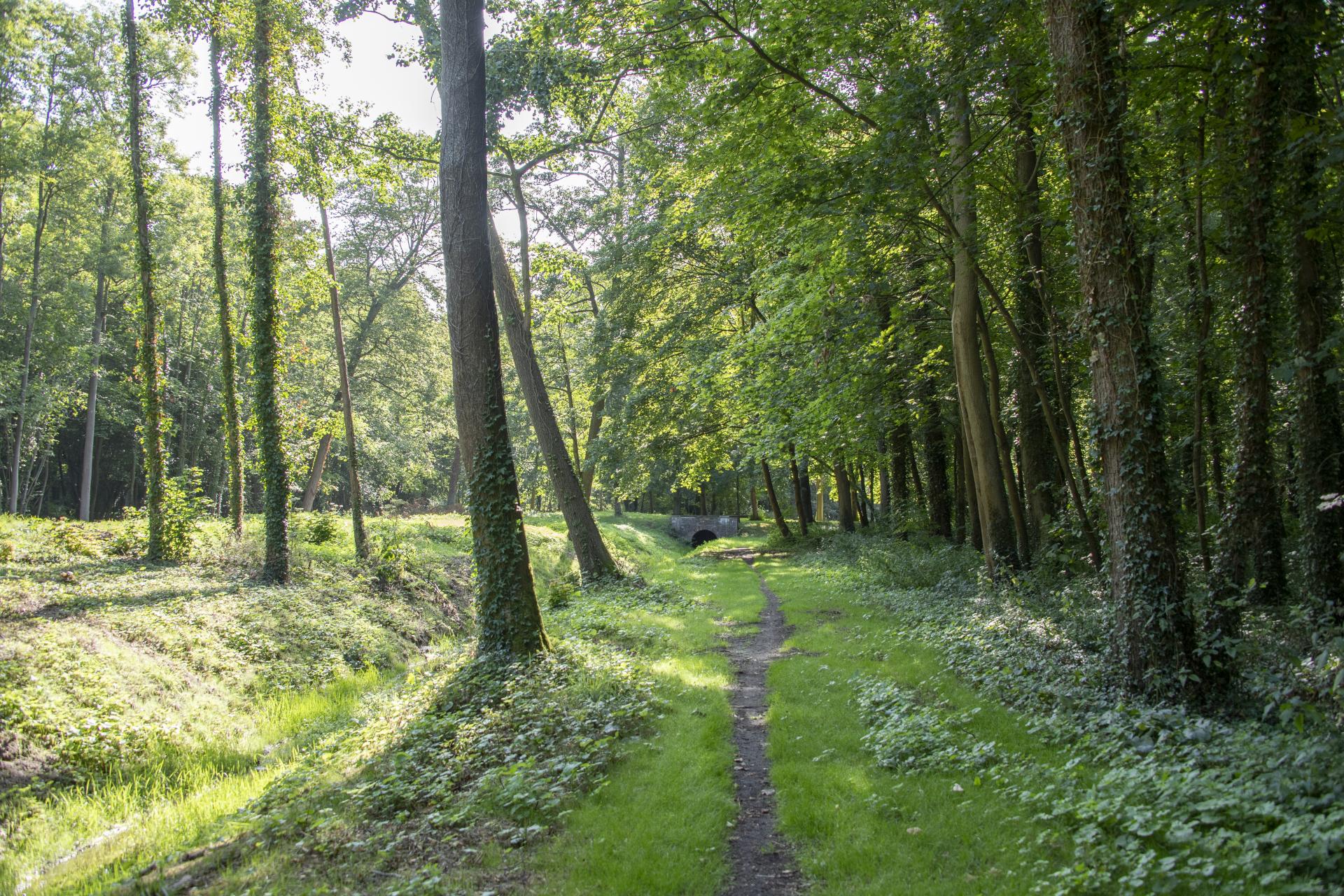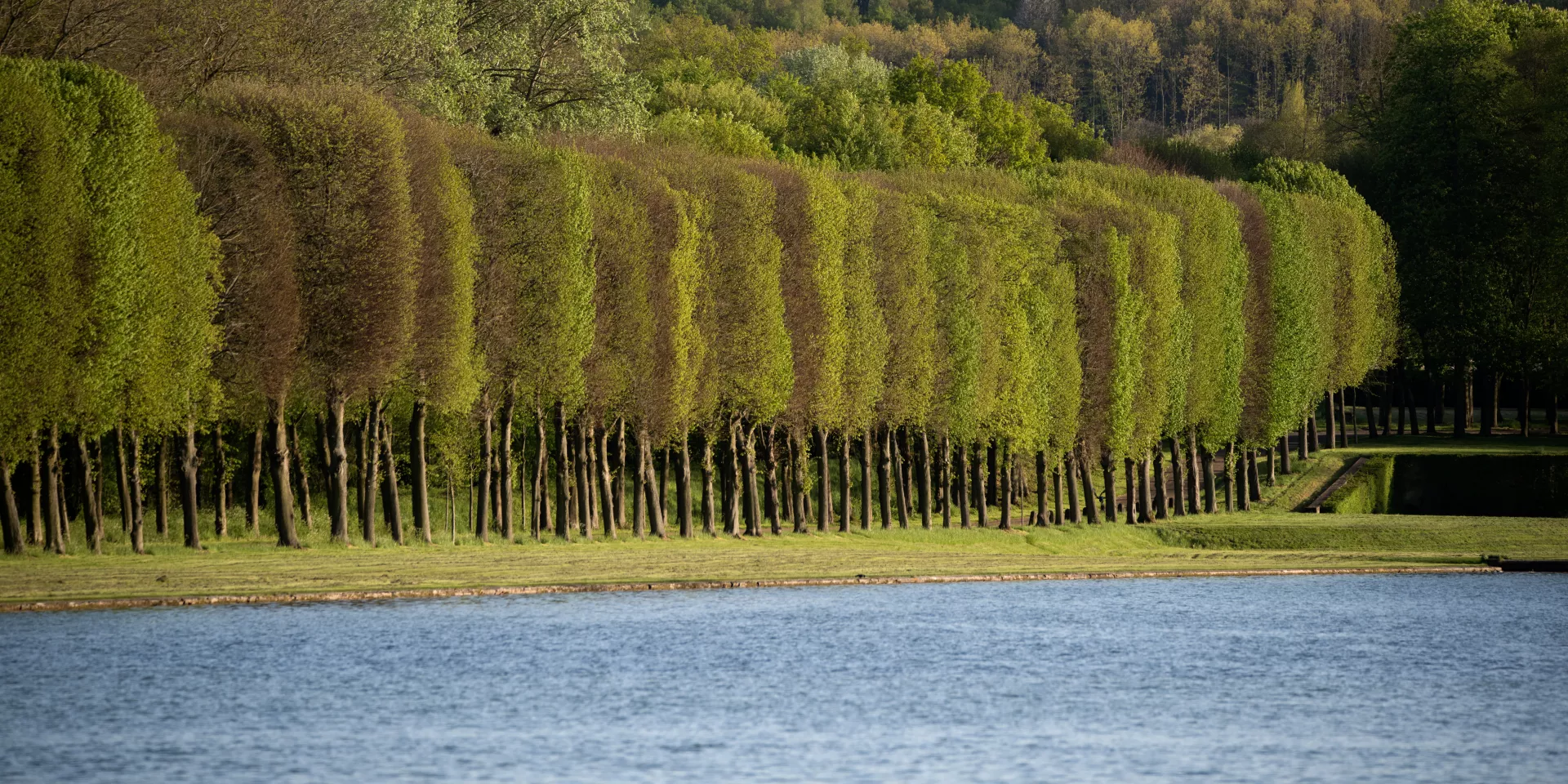- Pedestrian and cycle access to the Etoile Royale Gate is now possible from 7am to 7:30pm.
The Park covers approximately 800 hectares, criss-crossed by straight paths marking out wooded areas and agricultural fields, and is surrounded by a wall pierced by gates. Although some sections of land were lost during the Revolution and the 19th century, the Park’s perimeter nevertheless retained its original outline, and it continues to surround the estate of Versailles with the wealth of greenery it has always known.
The Park is open every day of the year except during exceptional weather (snow, violent winds, etc). The entry is free.
The grand canal

© Thomas Garnier
André Le Nôtre’s design for the Grand Canal transformed the east-west perspective into a long open section filled with light and stretching as far as the eye can see. The work took 11 years to complete, from 1668 to 1679. The Grand Canal is 1,670 metres long and its banks have played host to legendary parties, such as in 1674 when it was lit up along its entire length with thousands of jars placed behind transparent decorations. From 1669 onwards Louis XIV sailed different kinds of boats here, including rowing boats, and in 1674 the Republic of Venice sent the king two gondolas and four gondoliers. The gondoliers were housed in a series of buildings at the end of the Canal which was thereafter referred to as Little Venice. During the summer the canal played host to the King’s fleet of vessels, while in winter the frozen surface was used for skating and sledding. The transversal branches of the canal granted access by boat to the Menagerie (to the south) or Trianon (to the north).
lake of the swiss guard

© Thomas Garnier
The southern part of the gardens of Versailles was known for being rather damp, from stagnant water. In 1679 work started to excavate a large lake of 12 hectares to replace a pond referred to as “the Old Pond”; the new lake was only fully dug out in 1686. It also marked the end of the north-south axis which started at the Neptune Fountain. Some of the excavated soil helped create the Royal Vegetable Garden to the east. For a long time there remained a marshy area to the west of the lake, heading towards Saint-Cyr, known as the “Smelly Pond”, which was drained only in the 18th century.
rivulet of gally
22 kilometers long, the rivulet of Gally have its source in the Park of Versailles, in the Horseshoe pool.

© Christian Milet
Access is free for pedestrians and cyclists.
Vehicles must pay an entrance fee (€6 for cars and €3 for motorcycles). Free parking is available for people with reduced mobility upon presentation of official proof.





